Your cart is currently empty!
How to Sell Using Instagram Story
•
This page may contain affiliate links. If you follow a link to sign up or make a purchase, I’ll earn a small commission at no cost to you.

Did you know that 70% of Instagram users watch stories daily?
That’s not a small percentage.
Imagine the opportunity you’re losing because you don’t use Stories to sell your products or services.
Now, I understand your hesitancy with selling on your Instagram stories. Most people (myself included) don’t like selling.
It’s not a thing that comes naturally to everyone.
Maybe you feel awkward promoting yourself and your business. Maybe you’re not sure what to post. Or maybe you’ve tried selling on Stories before and got no results.
You’re not alone; I get it.
A lot of business owners struggle with this. Selling can feel pushy and uncomfortable.
But you shouldn’t let that be why you miss out on opportunities—that’s where this blog post comes in.
In this post, you’ll learn how to sell using Instagram Stories in a way that feels real, natural, and effective.
You’ll learn simple strategies you can start using right now to turn your Stories into a sales tool.
So, let’s get into it.
Why You Should Sell on Instagram Stories
People are watching.
As I mentioned, over 70% of Instagram users watch Stories every single day. That means your potential customers are already scrolling through Stories as part of their everyday routine. You just need to show up in the right way.
It feels real.
Stories let you show up as yourself. No filters (okay, maybe a few), no polished feed posts, just real-time, behind-the-scenes, everyday stuff. And that’s what people connect with. When you show your face, process, or product in the wild, people feel like they know you. And people buy from people they feel connected to.
It’s a two-way conversation.
Polls, questions, DMs—Stories give you great engagement. You can ask what your audience wants, answer questions, and start actual conversations. This isn’t just about selling. It’s about building real relationships that turn into loyal customers.
It’s built for conversions.
Instagram makes it easy for people to take action. With link stickers and swipe-ups (if you’ve got 10K+ followers), you can drive traffic straight to your product, booking page, or email list without them ever leaving the app.
It creates urgency.
Stories disappear in 24 hours. That countdown creates a natural sense of “if you don’t act now, you’ll miss it.” And that’s powerful. Use it to drop limited-time offers, early access, or flash sales that nudge people to take action today, not “someday” (more on this later).
Tips on How to Sell on Instagram Stories
Tip #1- Tell a story
The best way to sell on Instagram stories is to, well……tell a story.
You should never underestimate the power of a good story. And what’s better is that you don’t have to be an expert author to tell stories.
You don’t even realize that you tell stories every day. You tell stories when you’re talking to your co-workers, talking to your friends about what happened in the office, and explaining to people why you started your business.
Those are all stories. You just have to figure out how to tell your business story in a way that gets your audience to trust and buy from you.
So, instead of just posting your product or service offering and discussing its benefits, create a story around it. Use the story to show your audience how your product or service fits in their lives and why they need it.
For example, let’s say you sell skincare products. On your Instagram story, instead of just showing a moisturizer and telling your audience it has hyaluronic acid to keep the skin moisturized 24/7, tell them a story.
Tell a story of how you used to have extremely dry skin and no moisturizer helped; show them pictures or videos of your previously dry skin. Tell them how it was a deep insecurity of yours, and you used that insecurity to create a product you would have loved to have. Show them new pictures and videos of your skin currently and how it has changed.
This is how you sell your product with stories, the more relatable and painful the story, the better.
Telling stories is a great way to sell to your audience without them feeling like they’re being sold to.
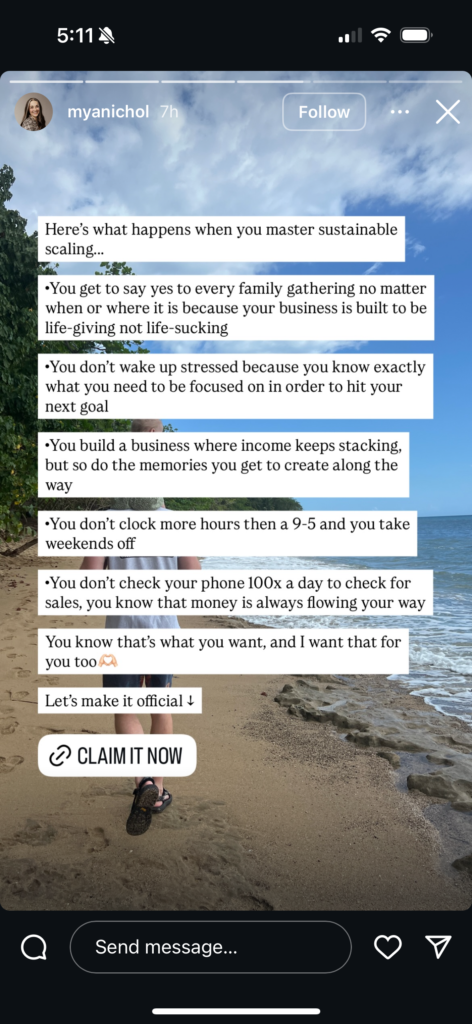
Tip #2 – Use social proof of people currently buying from you
Telling stories isn’t the only way to build trust with your audience. You can use social proof as well.
People trust other people more than they trust businesses. People take their lead from other people. It’s a psychological rule you can use in your favor.
Let me explain.
Imagine there’s a baker named Susan I found on Instagram. Susan offers baking classes to her followers.
I scroll through Susan’s Instagram page and see she’s been baking professionally for years. She posts everything from cookies to cakes, scones, tarts, and even strudels—and they all look delicious.
But even though her posts look good, do I trust Susan’s mouth-watering blueberry scone post enough to immediately sign up for her class?
Not quite, so I keep scrolling.
Then, on another day, I notice her Instagram Stories, where she’s shared screenshots of people enthusiastically signing up for her baking classes.
Now, that catches my attention. Seeing that others trust Susan enough to sign up makes me think she must really know her stuff.
And just like that, I decide to trust her, too. I sign up for her baking class.
The moral of the story?
People feel more confident buying when they see others already purchasing.
So, on your Instagram stories, share screenshots of direct messages, positive comments, or order confirmations to show that your product or service is in demand.
This builds credibility and encourages hesitant buyers to take action.
Tip # 3- Share BTS content
You know those TikTok videos of Etsy shop owners showing how they prepare and package an order? And some even make it ASMR?
I LOVE those, and I bet I’m not the only one.
People (like me) are nosey; they love seeing what happens behind a business.
By sharing a behind-the-scenes look into your business, you’re showing your audience the hard work that goes into what you do. You’re showing your audience that you’re not just a faceless business that could potentially scam them.
You’re showing them the human part of your brand. You’re building a connection with your audience.
You’re selling your business to them without them knowing it.
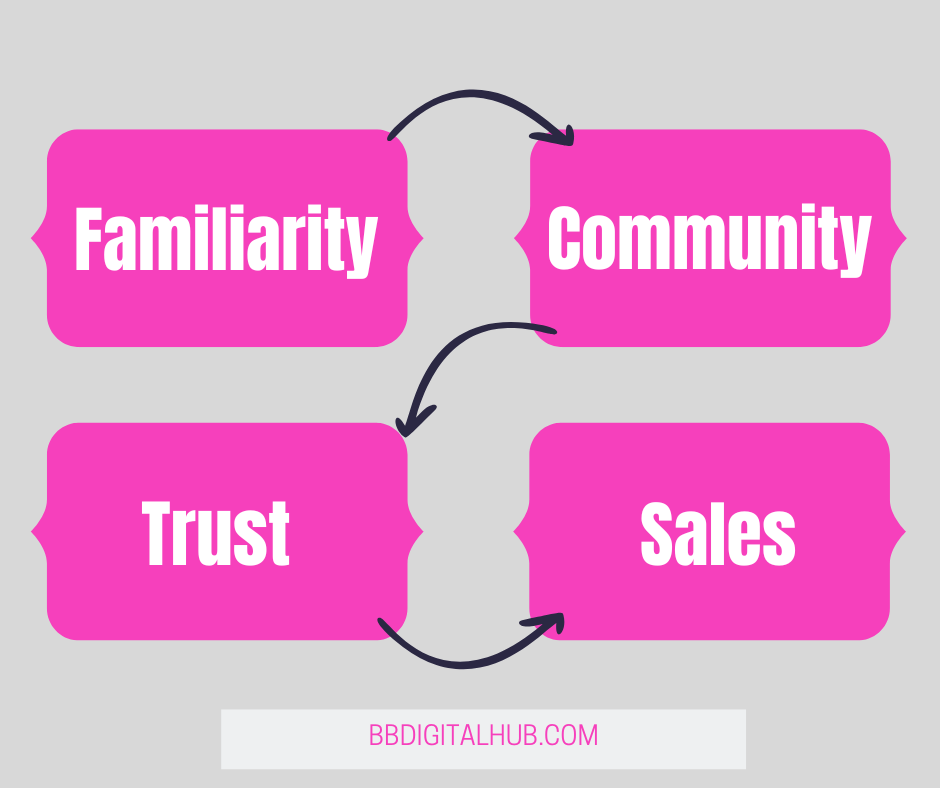
So, if you don’t do so already, start sharing scenes of how your product is made, packed, or shipped. If you offer a service, show a behind-the-scenes look at your process.
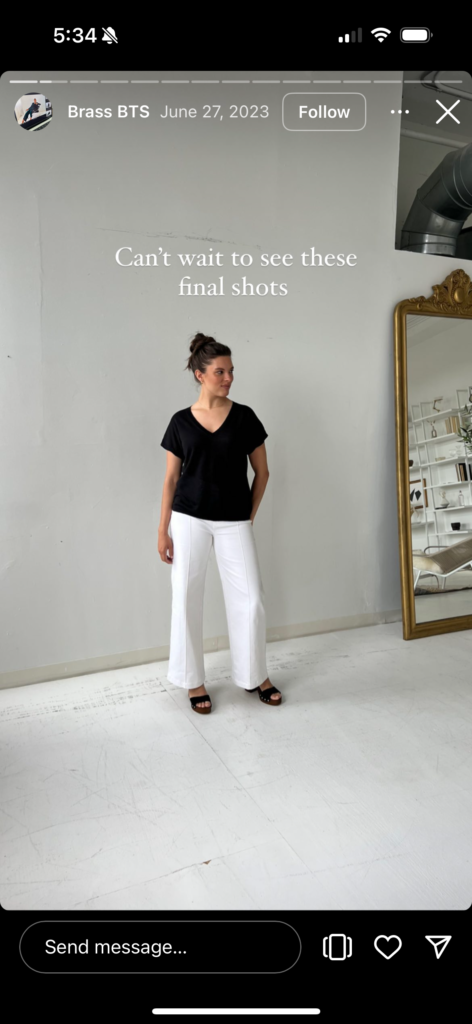
Tip #4 – Tease your product or service launch
The best way to get people excited about what you’re selling is by teasing them a little bit.
Give me a little glimpse, draw them in by positioning your offer as something they need, get them curious about it, and then leave them wanting more.
Show behind-the-scenes snippets of the product or service in development. Give your audience a sneak peek at the process—whether it’s footage of the production, a mood board for the concept, or the packaging being unboxed.
This makes them feel involved and invested in the launch.
Use wording like;
“ My next X is exactly what you need.”
“Imagine if you have X that can help you do Y”
“If you liked X, then you’ll love my next service.”
“If you’ve always had a problem with X, then watch this space for my announcement coming soon.”
Saying things like that builds curiosity. Get creative with your wording and engage your audience in what you offer.
You can even use blurred images and close-up shots that make your audience ask, “What is it?”
Build anticipation, and when your sale goes live, your audience will be clamoring to buy from you.
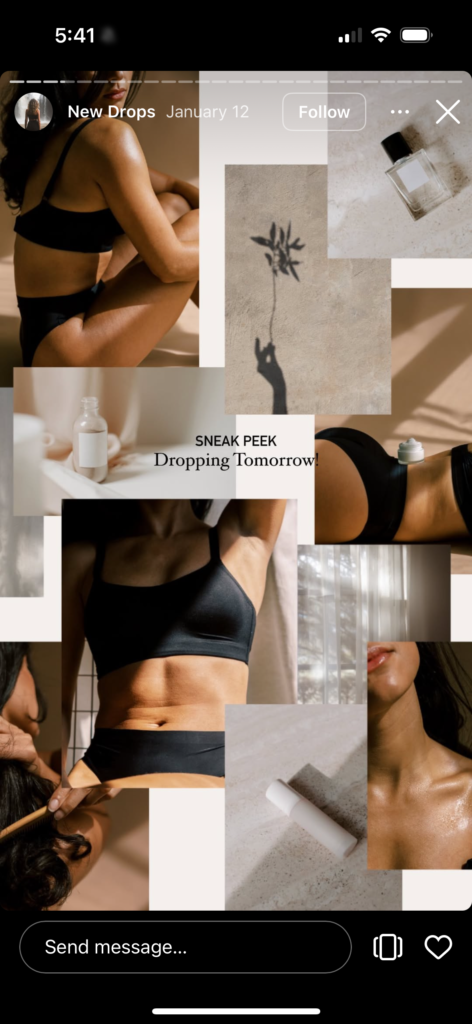
Tip #5- Use the DM me feature to build an email list
Did you know that having an email list is one of the smartest ways to ensure long-term sales cause you’re selling directly to an engaged audience that’s already interested in your business?
Have you ever tried using your Instagram stories to grow your email list?
No? Why not?
It’s not as complicated as you might think.
And before you think it, no, I don’t mean just asking your audience, “Hey please sign up to my email list, thanks.”
That’s not going to get the response you want; you need to be strategic. You need to create a compelling reason for them to sign up.
Offer a lead magnet, aka a freebie. It can be an exclusive discount, a free resource, or early access to your new product or service.
Then, ask your followers to send you a direct message (DM) with a keyword like “DISCOUNT” or “VIP” or literally anything to receive their freebie.
Once they DM you, send them a message thanking them and asking for their email address to receive said freebie.
They sign up and receive their freebie, and you get one more name to add to your email list.
Once it’s time to launch your new product or service, you’ll have an email list of people who are more likely to buy from you because they’ve already expressed interest in your business.
This approach makes selling feel more personal, conversational, and frictionless.
Tip #6- Address FAQs
One of the biggest barriers to making a sale is unanswered questions. If people are unsure about your product or service, they’ll hesitate to buy.
That’s why addressing FAQs (Frequently Asked Questions) in your Instagram Stories is so important—it removes doubts and speeds up the buying decision.
Think about the most common questions you get from potential customers. Do people ask about sizing, pricing, shipping, ingredients, or how your service works?
Instead of answering these questions one-on-one every time, address them in your Stories.
Use Instagram’s “Ask me Anything” question sticker to allow your audience to submit their own questions. Then, answer them in a way that builds trust and excitement about your offer.
For example, if you sell organic hair products, you might get questions like, “Is this safe for color-treated hair?” or “How long will it be before I see results?”
Instead of just saying, “Yes, it’s safe!” explain why: “Our formula is free from sulfates and parabens, so it won’t strip your color. Plus, our customers see results in just two weeks!”
Show images or testimonials to reinforce your answer. Referring to our first point, use storytelling to add more life to your answers.
Take it a step further and create an FAQ highlight on your main Instagram page so people always have access to it.
By addressing FAQs upfront, you eliminate doubts and make it easier for people to say “yes” to your product. That’s why informational content is one of the best ways to sell without actually selling.
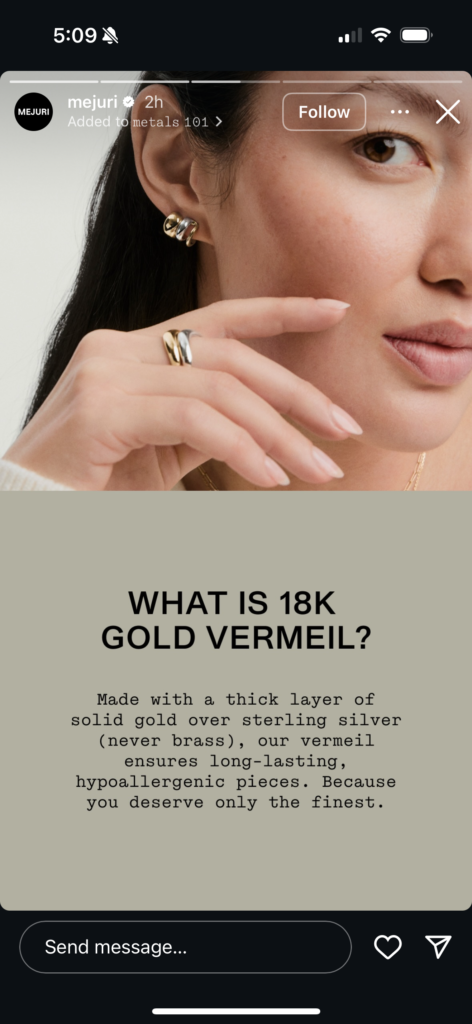
Tip #7 – Soft sell daily
I know selling isn’t every business owner’s favorite thing, but selling on Instagram doesn’t always mean pushing a hard sale.
In fact, if all you do is sell, sell, sell, it’ll turn people off, and it’s not a good look.
The key to consistent sales is soft selling—subtly integrating your product into your everyday content without making it feel like an ad.
Think about how you naturally talk about things you love. If you just got an amazing new pair of shoes, you don’t create a sales pitch for your friends. You just wear them, show them off, and casually mention how comfortable they are.
That’s exactly how you should sell on Instagram.
Instead of saying, “Buy this now!” show how your product fits into your life or your customers’ lives. Show how much better off they’ll be by using your service.
I hate to be a broken record, but I’ll mention it again cause it’s important.
Use storytelling.
If you sell handmade jewelry, don’t just post a Story saying, “New rings available!” Instead, record a quick video of yourself getting ready and casually say, “I never leave the house without this ring—it’s my absolute favorite piece from our new collection!”
This makes it feel natural and engaging rather than pushy.
By incorporating soft selling into your daily content, you stay top of mind without overwhelming your audience with constant sales pitches.
Tip #8 – Create urgency and scarcity
Ever noticed how when you think something might sell out, you suddenly want it more?
That’s the power of urgency and scarcity, and it’s a psychological trigger that can significantly boost your sales.
If people think they have unlimited time to buy something, they’ll put it off. But if they know there are only a few spots left or a limited-time discount, they’ll feel the need to act fast.
Use Instagram Stories to highlight limited-time offers, countdowns, or low-stock alerts.
If you sell online coaching sessions, instead of just saying, “Book a session,” say, “Only 3 spots left for this month—DM me now to grab yours before they’re gone!”
This makes people feel like they need to act quickly before they miss out.
The key to using urgency and scarcity is to make it real—if you say something is running out, it should be.
And don’t overuse this; there shouldn’t be a limited-time discount offer every single day.
Urgency and scarcity drive action, so use them wisely and strategically in your Stories to give hesitant buyers a little push.
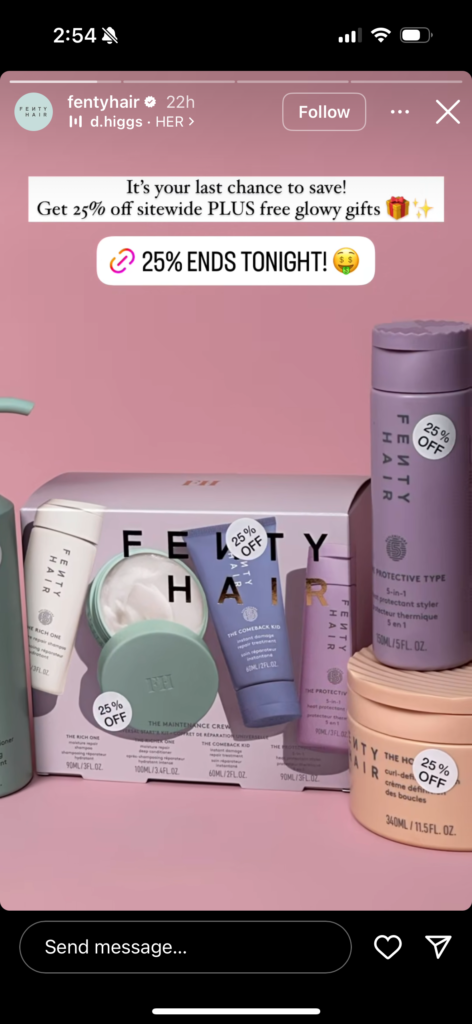
Tip #9 – Start a waitlist
Sometimes, the best way to increase demand for a product is to make people wait for it. A waitlist creates exclusivity and makes people feel like they’re getting VIP treatment.
Just like urgency and scarcity, using a waitlist is also a psychological tactic.
Instead of launching a product and hoping people buy, build anticipation by offering early access to those who sign up for a waitlist.
This builds a connection with your audience, makes them feel like they’re part of something special, and allows you to gather leads before your product or service even goes live.
This tip and tip #4 can work together. Use BTS to tease your offering on your Instagram Stories, then ask your audience to join your waitlist to get first dibs.
For example, if you’re launching a new coaching program, don’t just announce it on launch day.
Instead, post a few stories teasing your new service and building interest. Then, when you’ve built some momentum and curiosity, launch your waitlist.
Say something like, “Spots for my new program are opening soon! Want early access? DM me ‘WAITLIST’ to get on the exclusive list.”
Then, engage with those who DM you, keeping them excited and primed to buy.
When launch day comes, the people on your waitlist will be the first to jump in—because they’ve already committed.
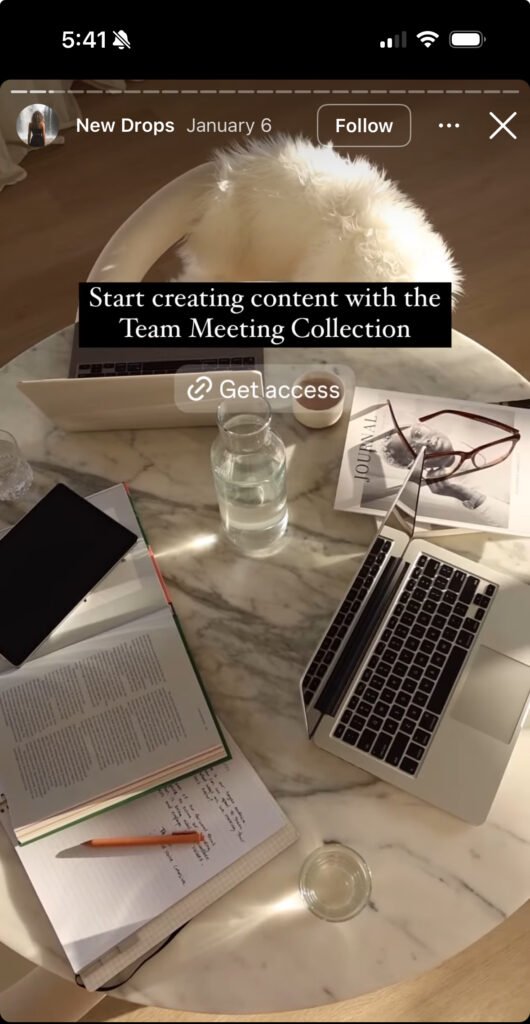
Instagram Story Ideas to Sell More
To help you start, here are some great Instagram story ideas for selling.
- Behind-the-scenes: Show a day in your life or a tour of your workspace to give followers an inside look at how your business operates.
- Product Spotlight: Feature one of your products or services in detail—explain its benefits and share testimonials.
- Customer Success Stories: Share short clips or quotes from satisfied clients to build trust and credibility.
- How-It’s-Made: Create a mini-documentary showing the creation process behind your product.
- Live Q&A: Host a live Q&A session where you answer questions about your business, products, or industry.
- Sneak Peek of New Launches: Tease upcoming products or services to create buzz and anticipation.
- Tips & Tricks: Offer industry-related tips that can help your audience, positioning you as an expert.
- Polls and Quizzes: Engage your audience with interactive polls or quizzes related to your niche.
- Before-and-After Stories: Show transformation stories (e.g., your product’s impact) to highlight value.
- User-Generated Content: Repost stories or images from happy customers using your products.
- Story Takeovers: Invite a satisfied customer to “take over” your story for a day.
- Weekly Recap: Summarize the week’s highlights, including achievements, milestones, or fun moments.
- Behind-the-Brand Values: Explain the mission, values, and vision behind your business to connect on a personal level.
- Industry News: Discuss the latest trends or news in your industry to position yourself as a thought leader.
- Interactive Tutorials: Create short how-to videos using your products or services to solve common problems.
- Unboxing Experience: Film an unboxing video if you’re launching a new product to build excitement.
- Fun Facts: Post interesting facts about your business to educate your audience in a fun way.
- Countdown to Launch: Use a countdown sticker for new product releases, building anticipation over several days.
- Live Demonstrations: Show how your service or product works in real time to answer potential questions.
- Behind-the-Scenes Challenges: Reveal some of the challenges you face and how you overcome them, adding authenticity.
- Creative Process Insight: Show brainstorming sessions or the creative process behind a new idea
- Product “Anatomy” Breakdown: Zoom in on a product’s unique feature—explain each component or design choice and how it benefits the customer.
- Behind-the-Scenes Manufacturing: Film the journey of a product from raw material to finished item, highlighting craftsmanship and quality checks.
Selling on Instagram Stories isn’t about pushing products nonstop; it’s about building trust, engaging with your audience, and using smart strategies to guide them toward making a purchase.
By using social proof, storytelling, and behind-the-scenes content, you create a sales funnel that feels natural and authentic.
The more you implement these strategies, the more comfortable your audience will feel buying from you.
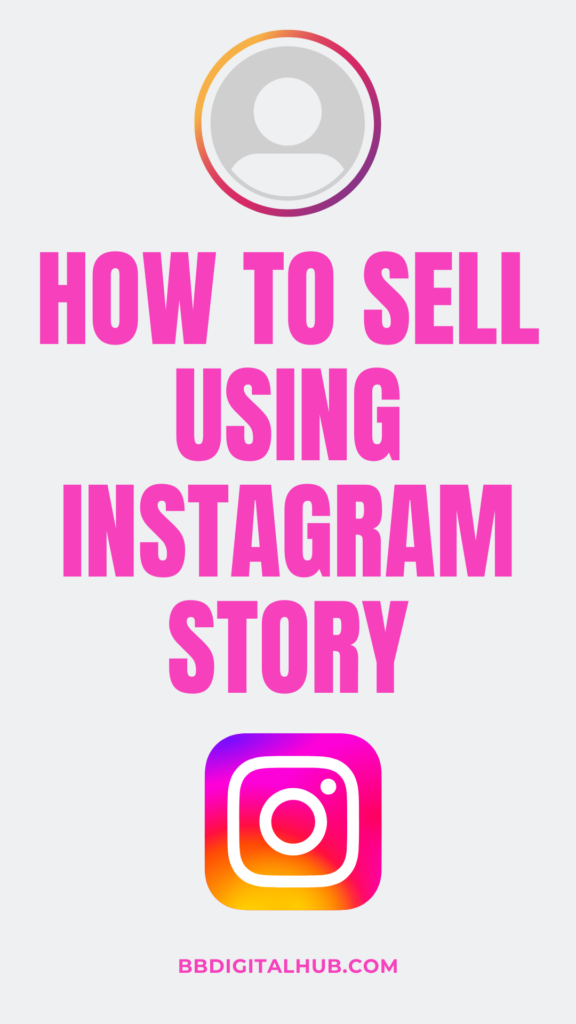
Join Our Community Today
Get exclusive access to straightforward marketing strategies tailored for beginners.

Leave a Reply